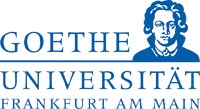Treating leukaemia more effectively

Acute lymphoblastic leukaemia (ALL) is the most common kind of cancer in children. T-ALL, a subtype that resembles T-lymphocytes, can be treated successfully with the drug nelarabine. The drug has not been successful, however, with B-ALL, a subtype resembling B-lymphocytes.
Since the 1980s, oncologists have been puzzled as to the cause of this difference. Now, an international research team headed by Goethe University and the University of Kent has discovered the reason: B-ALL cells contain the enzyme SAMHD1, which deactivates the drug.
In the current issue of “Communications Biology”, Professor Jindrich Cinatl from the Institute for Medical Virology at Goethe University and Professor Martin Michaelis from the School of Biosciences at the University of Kent report on their investigations with nelarabine on different cell lines.
“Nelarabine is the precursor of the drug, a prodrug, that does not become effective until it is combined with three phosphate groups in the leukaemia cell,” explains Professor Cinatl. “In studies of various ALL cell lines and leukaemia cells from ALL patients, we have been able to demonstrate that the enzyme SAMHD1 splits the phosphate groups off so that the medicine loses its effect.” Because B-ALL cells contain more SAMHD1 than T-ALL cells, nelarabine is less effective with B-ALL.
These results could improve the treatment of ALL in the future. In rare cases, B-ALL cells contain very little SAMHD1 so that treatment with nelarabine would be possible. On the contrary, there are also rare cases of T-ALL exhibiting a lot of SAMHD1. In such cases, the otherwise effective nelarabine would not be the right medication. Professor Michaelis observes: “SAMHD1 is thus a biomarker that allows us to better adapt treatment with nelarabine to the individual situation of ALL patients.”
Tamara Rothenburger, whose doctoral dissertation was funded by the association “Hilfe für krebskranke Kinder Frankfurt e.V“, is satisfied when she looks back at her research. “I hope that many children with leukaemia will benefit from the results.” The research was also supported by the Frankfurt Stiftung für krebskranke Kinder. Additional members of the research group are Ludwig-Maximilians-Universität Munich, and University College London.
Current news about science, teaching, and society can be found on GOETHE-UNI online (www.aktuelles.uni-frankfurt.de)
Goethe University is a research-oriented university in the European financial centre Frankfurt am Main. The university was founded in 1914 through private funding, primarily from Jewish sponsors, and has since produced pioneering achievements in the areas of social sciences, sociology and economics, medicine, quantum physics, brain research, and labour law. It gained a unique level of autonomy on 1 January 2008 by returning to its historic roots as a “foundation university”. Today, it is one of the three largest universities in Germany. Together with the Technical University of Darmstadt and the University of Mainz, it is a partner in the inter-state strategic Rhine-Main University Alliance.
Internet: www.goethe-universitaet.de
Publisher: The President of Goethe University Editor: Dr. Markus Bernards, Science Editor, PR & Communication Department, Theodor-W.-Adorno-Platz 1, 60323 Frankfurt am Main, Tel: -49 (0) 69 798-12498, Fax: +49 (0) 69 798-763 12531, bernards@em.uni-frankfurt.de
Prof. Dr. rer. nat. Jindrich Cinatl
Institute for Medical Virology
University Hospital Frankfurt
Tel.: +49 69 6301-6409
E-mail: cinatl@em.uni-frankfurt.de
Tamara Rothenburger, Katie-May McLaughlin, Tobias Herold, Constanze Schneider, Thomas Oellerich, Florian Rothweiler, Andrew Feber, Tim R. Fenton, Mark N. Wass, Oliver T. Keppler, Martin Michaelis, Jindrich Cinatl. SAMHD1 is a key regulator of the lineage-specific response of acute lymphoblastic leukaemias to nelarabine, in: Communications Biology, DOI 10.1038/s42003-020-1052-8, https://www.nature.com/commsbio/
Media Contact
All latest news from the category: Life Sciences and Chemistry
Articles and reports from the Life Sciences and chemistry area deal with applied and basic research into modern biology, chemistry and human medicine.
Valuable information can be found on a range of life sciences fields including bacteriology, biochemistry, bionics, bioinformatics, biophysics, biotechnology, genetics, geobotany, human biology, marine biology, microbiology, molecular biology, cellular biology, zoology, bioinorganic chemistry, microchemistry and environmental chemistry.
Newest articles

First-of-its-kind study uses remote sensing to monitor plastic debris in rivers and lakes
Remote sensing creates a cost-effective solution to monitoring plastic pollution. A first-of-its-kind study from researchers at the University of Minnesota Twin Cities shows how remote sensing can help monitor and…

Laser-based artificial neuron mimics nerve cell functions at lightning speed
With a processing speed a billion times faster than nature, chip-based laser neuron could help advance AI tasks such as pattern recognition and sequence prediction. Researchers have developed a laser-based…

Optimising the processing of plastic waste
Just one look in the yellow bin reveals a colourful jumble of different types of plastic. However, the purer and more uniform plastic waste is, the easier it is to…



